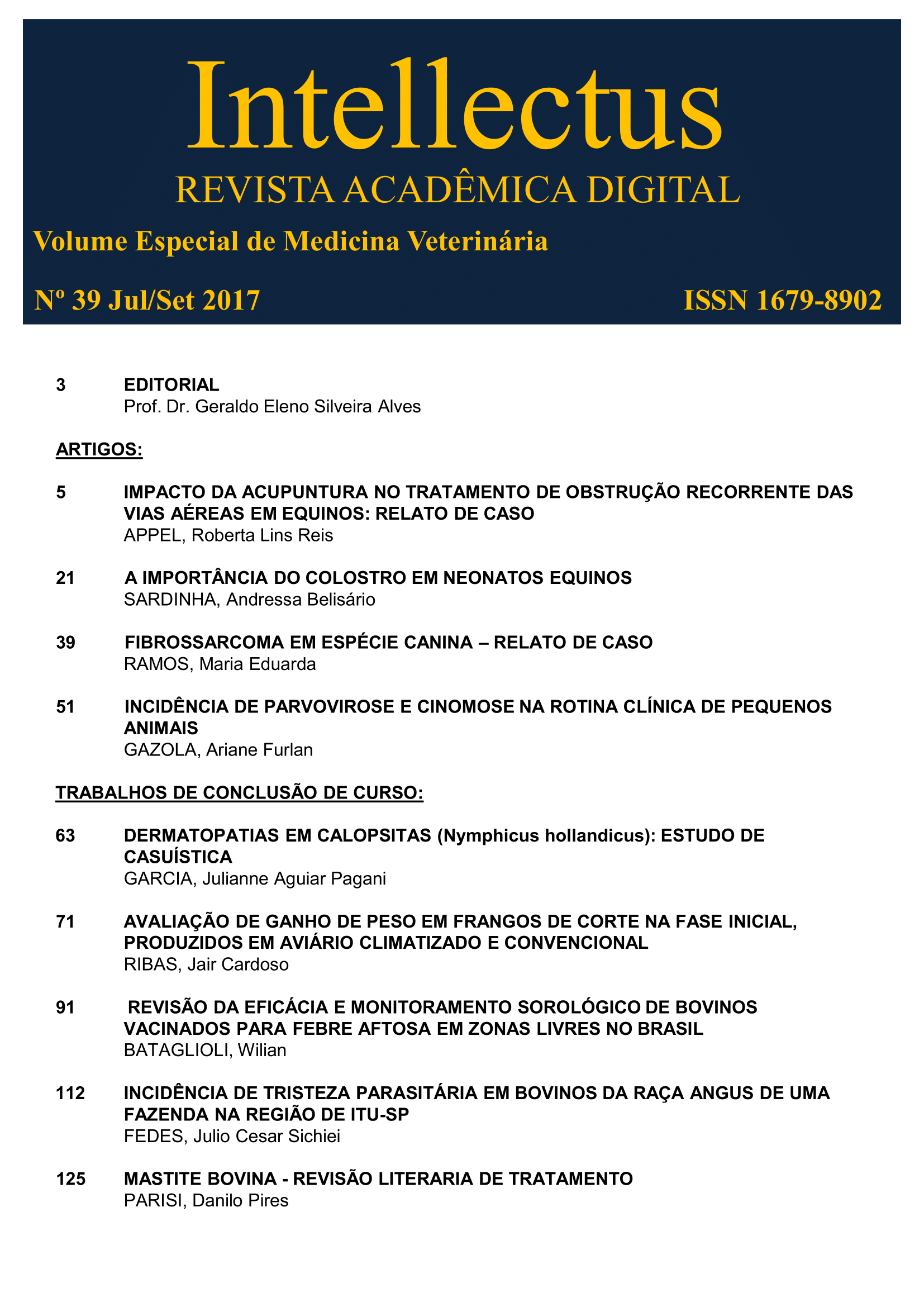Food Hypersensitivity in dogs
Literature Review
Keywords:
hypersensitivity, food antigens, dogsAbstract
The food hypersensitivity or food allergy is an exaggerated immune response triggered by a protein with a molecular weight greater than 10,000 kDa. The immunological mechanisms of the disease is not fully understood, however it is known that there is the presence of hypersensitivity reactions of type I, III and IV. Any protein source diet can trigger an allergic response in susceptible animals, but is documented a higher occurrence in foods such as beef, chicken, soy, wheat, corn and dairy products. Cutaneous manifestations are characterized by
not presenting seasonality, with the presence of pruritus, erythema, epidermal colarettes, besides pododermatitis and external otitis. Gastrointestinal symptons such as vomiting and diarrhea may or may not be observed. Chronic patients may show hyperpigmentation, lignification and pyodermas. The most appropriate diagnostic tests for food allergy is the elimination diet, using diets based on new sources of protein or hydrolyzed protein diets base maintained for a period of 6 to 12 weeks. The goal of treatment is to remove of the dog’s diet the antigen that is causing the hypersensitivity, by the recognition of the allergen and restrict them from feeding. The prognosis of the treatment is considered good when there is identification of a possible allergen.



